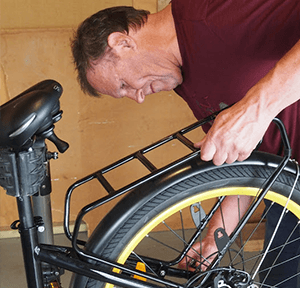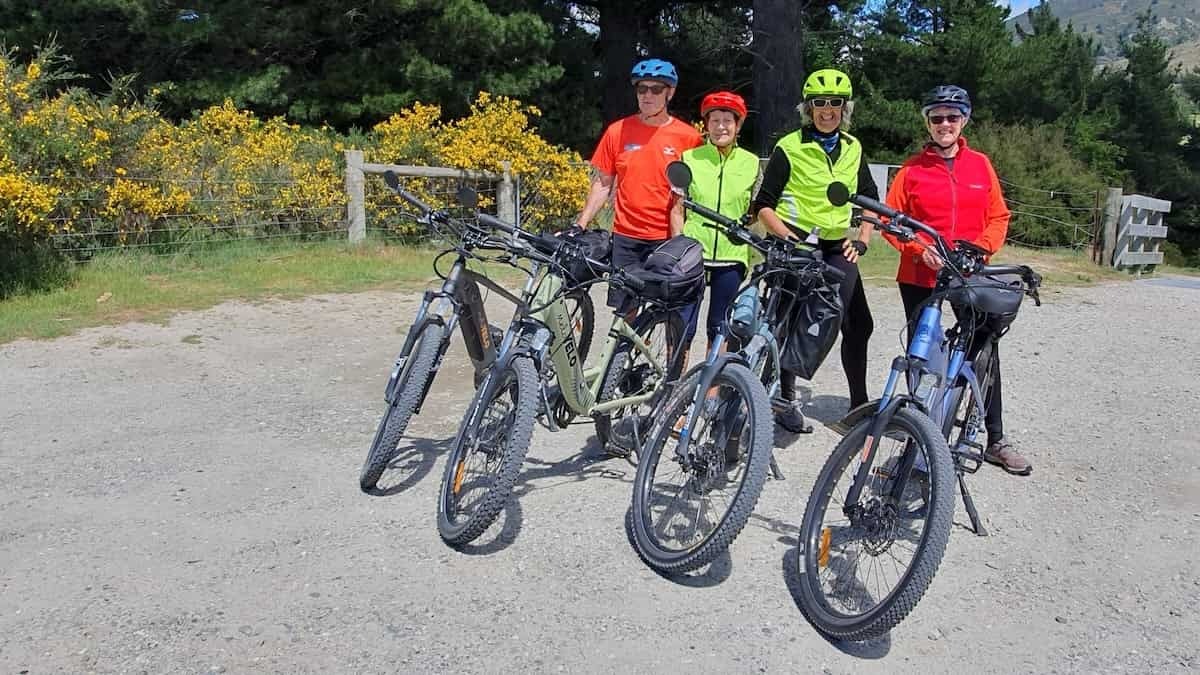How to Maintain Your Electric Bike for Peak Performance in New Zealand’s Climate

Strong 8k brings an ultra-HD IPTV experience to your living room and your pocket.
Electric bikes (e-bikes) have quickly become a preferred mode of transport across New Zealand, offering sustainability, convenience, and freedom. However, whether you're commuting through Auckland's urban streets or tackling the trails around Queenstown, electric bike maintenance in New Zealand requires specific care due to the country's diverse climate and extreme weather conditions.
This guide provides practical e-bike performance tips for NZ riders, helping you maintain optimal function and extend your bike's lifespan year-round.
1. Combat Moisture: Rain and Coastal Conditions
New Zealand’s rapidly changing weather, especially in coastal cities, exposes your e-bike to constant moisture. Rain, salt air, and humidity can cause premature wear and corrosion if not correctly managed.
Tips from our e-bike cleaning guide:
- Wipe down your e-bike after every wet ride.
- Use a non-corrosive cleaner and dry cloth to clean the drivetrain.
- Apply dielectric grease to battery contacts to protect electronics.
- Avoid high-pressure washing, which can force water into the motor or display.
If you ride year-round, mastering proper cleaning is essential to effective electric bike maintenance in New Zealand.
2. Smart Battery Care for Every Season
Your e-bike battery is the heart of your machine, and extreme temperatures can significantly impact its health. Whether you're enduring a Dunedin winter or a Rotorua summer, caring for your e-bike battery is critical.
E-bike performance tips NZ riders should follow:
- In summer, avoid direct sun exposure; in winter, charge indoors at room temperature.
- Don't charge the battery immediately after riding; let it cool.
- Keep charge levels between 20% and 80% for regular use.
- For long-term storage, aim for a 50–70% charge.
Following these practices helps preserve battery health across both summer and winter e-bike maintenance cycles.
3. Clean and Lubricate After Windy or Dusty Conditions
Windy regions like Wellington often carry dust, sand, or salt particles that can clog your drivetrain and wear down gears. A consistent cleaning habit is key to maintaining smooth performance.
Refer to this step in your e-bike cleaning guide:
- Use a dry brush to remove dirt from the derailleur and cassette.
- Lubricate the chain every few rides or more often if riding near the sea.
- Inspect brake calipers and tire treads after off-road rides.
Cleanliness has a direct impact on performance, especially in rugged or variable terrains familiar in New Zealand.
4. Schedule Routine Mechanical Checks
Basic but consistent checks are essential to long-term electric bike maintenance in New Zealand. Even small misalignments or worn components can turn into costly repairs.
Monthly checks should include:
- Brake pads and rotors
- Tire pressure and tread wear
- Bolt and screw tightening
- Functionality of lights and display unit
Combining self-inspection with occasional professional servicing ensures better durability and riding efficiency.
5. Storage Tips for Off-Season Riders
New Zealand's winter can be wet, icy, and challenging for cyclists. If you're planning to pause riding, proper storage is essential to prevent long-term damage.
Here's what you need to know about storing electric bikes in winter:
- Clean your e-bike thoroughly before storage to remove grit and moisture.
- Store indoors in a dry, temperate environment.
- Detach and store the battery separately at a 50–70% charge.
- Cover your bike with a breathable fabric, not plastic, to prevent condensation buildup.
Following these storage guidelines will make springtime reactivation hassle-free and safer.
6. Seasonal Maintenance: Adapting to NZ’s Climate
New Zealand experiences significant seasonal shifts, so it's essential to have a maintenance routine that adapts to the changing weather.
Best practices for summer and winter e-bike maintenance:
- Summer: Focus on battery heat protection, UV shielding, and increased chain lubrication.
- Winter: Emphasize brake pad care, battery maintenance, and post-ride cleaning to prevent salt and rain damage.
Get a complete tune-up at least twice a year, once before summer and once before winter.
These climate-aware practices are
Conclusion
Owning an electric bike in New Zealand offers unmatched freedom, but it comes with the responsibility of weather-specific care. From following a solid e-bike cleaning guide to properly storing electric bikes in winter, every detail contributes to performance, safety, and battery longevity. Keep these e-bike performance tips NZ riders trust in mind and establish a bright summer and winter e-bike maintenance routine. The result? A smoother, safer ride, no matter the season.
FAQ’s
Should I leave my e-bike battery plugged in all the time?
No, it's not recommended. Overcharging can reduce battery lifespan; unplug it once fully charged.
What is the speed limit on e-bikes in New Zealand?
The legal limit is 32 km/h with motor assistance. Beyond this, the motor must cut off.
How to maximize e-Bike battery life?
Charge regularly, avoid full drains, store in a cool, dry place, and use the correct charger.
Should I remove my e-bike battery when not in use?
Yes, especially for long storage or in extreme temperatures. Store it indoors at 50–70% charge.
What size motor is best in an e-bike?
A 250W motor is ideal for city commuting; 500W–750W is better for hills or heavier loads.
Note: IndiBlogHub features both user-submitted and editorial content. We do not verify third-party contributions. Read our Disclaimer and Privacy Policyfor details.







